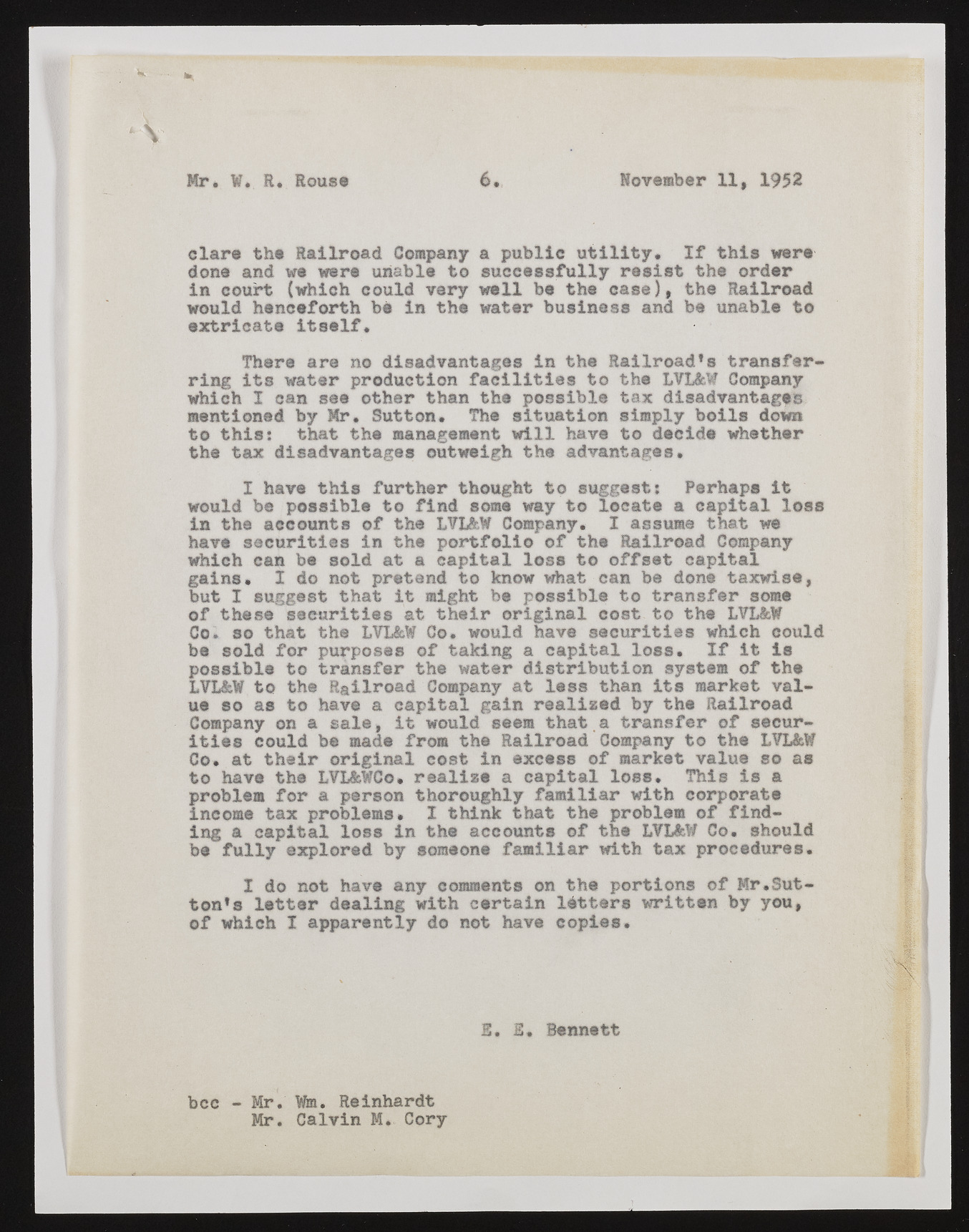Copyright & Fair-use Agreement
UNLV Special Collections provides copies of materials to facilitate private study, scholarship, or research. Material not in the public domain may be used according to fair use of copyrighted materials as defined by copyright law. Please cite us.
Please note that UNLV may not own the copyright to these materials and cannot provide permission to publish or distribute materials when UNLV is not the copyright holder. The user is solely responsible for determining the copyright status of materials and obtaining permission to use material from the copyright holder and for determining whether any permissions relating to any other rights are necessary for the intended use, and for obtaining all required permissions beyond that allowed by fair use.
Read more about our reproduction and use policy.
I agree.Information
Digital ID
Permalink
Details
More Info
Rights
Digital Provenance
Publisher
Transcription
Mr. W. R* Rouse 6 November 11, 1952 clare the Railroad Company a public utility. If this were done and we were unable to successfully resist the order in court (which could vary well be the case), the Railroad would henceforth be in the water business and be unable to extricate itself. There are no disadvantages in the Railroad*s transferring its water production facilities to the LVL&W Company which I can see other than the possible tax disadvantages mentioned by Mr. Sutton. The situation simply boils down to this: that the management will have to decide whether the tax disadvantages outweigh the advantages, I have this further thought to suggest: Perhaps it would be possible to find some way to locate a capital loss in the accounts of the LVL&W Company. I assume that we have securities in the portfolio of the Railroad Company which can be sold at a capital loss to offset capital gains. I do not pretend to know what can be done taxwise, but I suggest that it might be possible to transfer some of these securities at their original cost to the LVL&W Co. so that the LVL&W Co. would have securities which could be sold for purposes of taking a capital loss. If it is possible to transfer the water distribution system of the LVL&W to the Railroad Company at less than its market value so as to have a capital gain realized by the Railroad Company on a sale, it would seem that a transfer of securities could be made from the Railroad Company to the LVL&W Co. at their original cost in excess of market value so as to have the LVL&WGo. realize a capital loss. This is a problem for a person thoroughly familiar with corporate income tax problems. I think that the problem of finding a capital loss in the accounts of the LVL&W Co. should be fully explored by someone familiar with tax procedures. I do not have any comments on the portions of Mr.Sutton* s letter dealing with certain letters written by you, of which I apparently do not have copies. S. E. Bennett bcc - Mr. Wm. Reinhardt Mr. Calvin M. Cory

